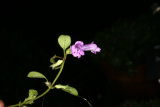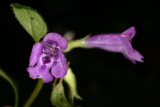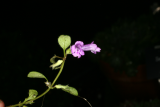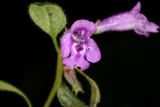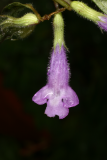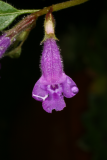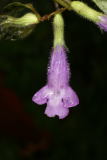Additional notes (click to expand)
Medicinal
Used to promote sweating (diaphoretic) and reduce fevers (febrifuge).
Plants for a Future at www.plantsforafuture.org.uk
Nomenclature
Bas. = Thymus alpina Syn. = Satureja alpina; Calamintha alpina
Other use
Leaves are used as a culinary flavouring and drunk as a tea.
Plants for a Future at www.plantsforafuture.org.uk
Acinos alpinus (L.) Moench. Lamiaceae. Rock thyme. Small herbaceous perennial. Distribution: C. and S. Europe. This is Mountain wild Basill, Clinopodium alpinum, of Parkinson (1640), the Teucrium Alpinum and Clinopodium Alpinum hirsutum of Bauhin. Then as now, when it has the synonyms Thymus alpinus, Satureja alpina and Calamintha alpina, its nomenclature has been confused. It is unlikely to be the Acinos or Clinopodium of Theophrastus or Disocorides. Dioscorides gives opposing medicinal uses to the plants he knows by these two names, and Parkinson (1640) makes no judgement as to its uses. Reportedly drunk as a tea in Greece, but evidence for it being used historically for fevers is lacking.
Oakeley, Dr. Henry F. (2013). Wellcome Library notes.
link
Geographical distribution
- Europe, Middle Europe
- Europe, Southeastern Europe
Acinos alpinus (L.) Moench
Family: LAMIACEAEGenus: Acinos
Species: alpinus (L.) Moench
Common names: Alpine Calamint
Distribution summary: C. & S. Europe
Habit: Perennial
Hardiness: H5 - Hardy; cold winter
Habitat: Dry, sunny, rocky mountains
Garden status: Not currently grown
Reason for growing: Medicinal, other use
